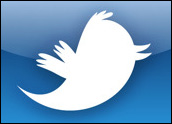
I read the accounts of Twitter’s S-1 announcement in The New York Times last week, and there were a few representative tweets in the article.
My favorite was, “This is Peak Twitter,” implying it was time to sell — but that overlooks the inconvenient idea that except for the secondary markets, there isn’t anything to sell yet or a place for most of us to do so.
I went back to find the tweet and couldn’t, which shows you the transient nature of tweets and the Internet. I think the person doing the posting, the tweeter I suppose, had that old Wall Street maxim in mind: Buy on the rumor and sell on the news.
Certainly, if Facebook’s early post-IPO days are any indicator, the tweeter might have been looking to exploit a short position — but what do I know is that I’m not a financial analyst.
Cultural Shifts
The S-1 got me thinking about how many things have been subtly changing around the industry. We’ve developed into a social culture complete with its own vocabulary and memes. Why stop at social, though? Last week, I wrote a post about how the subscription economy had spawned a subscription culture, and I suppose we could say that the iPhone and iPad have spawned a mobile culture too.
What’s interesting in all this is that while I think all these “cultures” have hit critical mass, many of us walk around thinking of them as mere appendages to reality rather than a change in reality. The difference? Plenty.
When you instinctively reach for your iPad to look something up, you’ve hit the mobile culture, and when you do the same to check in on Foursquare or to check your tweets, you’ve gone mobile and social.
Less obvious but even more interesting to me is the idea of subscriptions. Fifteen years ago, subscriptions were rare and exotic — like mortgage-backed securities — but thanks to numerous companies, like Salesforce, Dropbox, NetSuite, Amazon, and many others, not to mention car leases and phone plans, subscriptions are here and not about to go away.
Subscriptions have changed us, and through them we have changed business. The big difference today is that people think more like subscribers — and vendors have been brought along having to think about recurring sales and revenue, churn and attrition, and customer lifetime value, and dozens of things no one gave much thought to when we bought and sold products.
Altered Relationships
All of this has subtly changed the way we think about customers — and relationships too. Gone are the days when you could call a customer a “consumer.” Consumers represent a tiny part of a lifecycle, while customers represent the whole thing, including the cycle’s renewal. Today, calling a customer a “consumer” is to me like calling a woman a “girl.” You just really shouldn’t do that.
I think we’ve entered the subscription culture, along with the social and mobile cultures, and to a degree they are all mutually reinforcing. They’ve invisibly shaped our world so that while it might not look very different from a few years ago, it is indeed different. That is why we pay attention when companies like Twitter and Facebook file their S-1 forms.
Twitter has already materially changed the world — just think about what’s happened in the Middle East in the last few years — and a new bolus of cash will give the company more tools to accelerate the changes it causes. With a mere 200 million subscribers, Twitter is a good-sized country — about the size of Brazil (No. 5 on the world list) but without the ability to host the Olympics.
That kind of population, combined with the idea that these people are relatively wealthy and well-educated by world standards, suggests that the culture will continue to spread. We already knew it was a social, mobile, and subscription world, but what might not have dawned on us is that these things are combining to make culture too. When that happens, things can accelerate.






















































